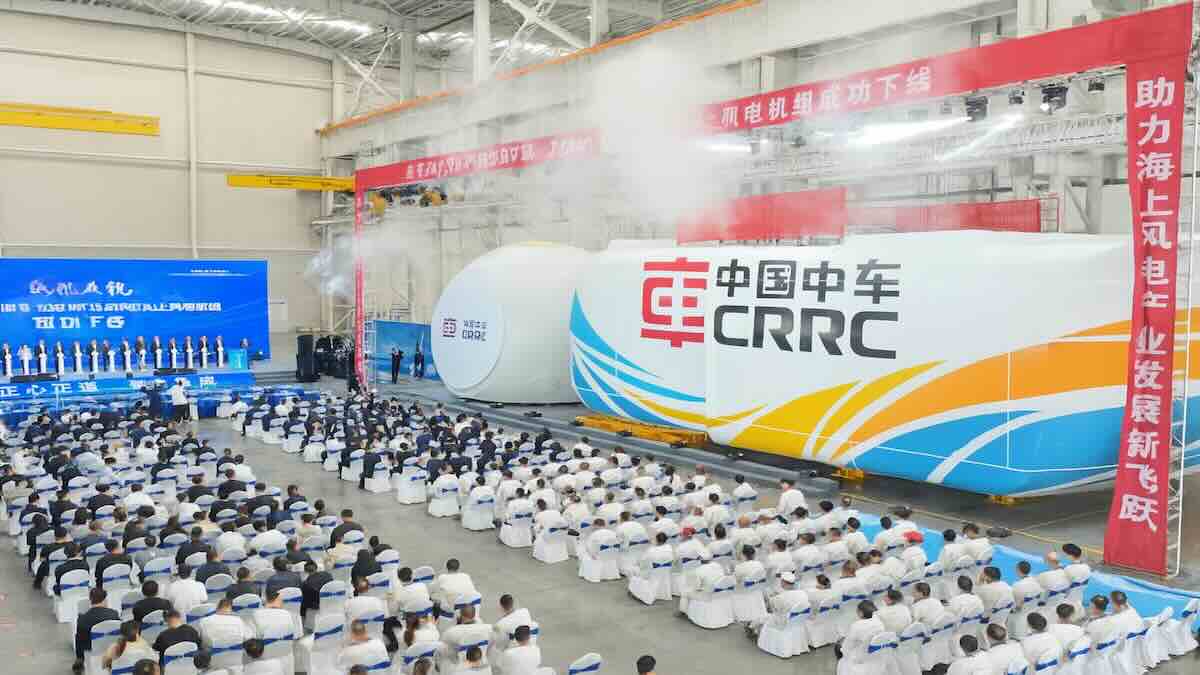CRRC Corporation’s Qihang project takes offshore wind to a truly extraordinary scale, and resets expectations. Rated at 20 MW, with a rotor so wide a high-rise footprint fits inside its sweep, it combines sheer size with sophisticated controls to keep electricity coming when the breeze slackens. The headline image is literal: picture a skyscraper framed by the turning blades, with room to spare. That magnitude is the message—and the promise—built into this turbine.
What the Qihang project is and why it matters
Qihang is introduced as a new-generation offshore turbine designed for massive, utility-scale wind projects. The key figures stand out clearly: a 20 MW rating, blades sweeping 853 feet, and a tower rising 495 feet place it among the largest turbines ever described. Engineers highlight durability in harsh seas and consistent production at lower wind speeds, two barriers common to offshore sites. The image of “a skyscraper between its blades” conveys the span, but it also points to the technical challenge: longer rotors, heavier stresses, and a vast swept area that converts more wind into usable power at each installation.
Understanding the dimensions in everyday terms
A rotor measuring 853 feet across means each blade sweeps an arc longer than many city blocks. A 495-foot tower raises the hub well above coastal obstacles to reach steadier flows. Framing that with a skyscraper between the blades is not just a publicity flourish; it captures how far modern wind has scaled. The bigger the swept area, the more energy can be harvested from the same patch of ocean, provided the structure, materials, and controls can handle the loads.
How the turbine turns ocean wind into steady power
Scale alone does not guarantee usable energy; consistency does. Qihang’s design focuses on extracting more from variable winds and smoothing output. According to information shared by the developer, the machine uses over 200 sensors to monitor loads, vibrations, and wind conditions in real time. Control software continually pitches the blades and optimizes yaw to keep operation within safe envelopes while maximizing production. A modular electrical design supports different power configurations so operators can match regional grid needs or project constraints.
Sensors and control at work
The monitoring system feeds continuous data to the controller, which adjusts blade angles quickly to changing gusts, trims structural loads, and protects components in storms. This high-frequency feedback is especially important offshore, where maintenance windows are limited and conditions change fast. By keeping the machine in its most efficient operating zones more often, the control strategy turns a very large rotor into steadier megawatt-hours over a year.
Practical effects on grids, emissions and jobs
Gigantic offshore machines change project math. Fewer foundations per gigawatt mean simpler arrays, shorter build schedules, and lower balance-of-plant costs for the same capacity. The environmental case is concrete in the figures cited for Qihang: an annual saving of 27,500 tons of coal and an estimated reduction of 68,500 tons of carbon emissions. Using sea winds shifts production away from dense coastlines without adding local air pollution. Economically, clustering high-output machines at sea supports local supply chains in fabrication, installation vessels, and long-term operations—skilled jobs that endure through the project life.
Where it stands among the giants
On sheer scale, Qihang sits with the very largest machines described in public. The 20 MW rating places it at the front of commercial-class designs, and the quoted dimensions reinforce that status. The intent is clear: set a new benchmark that pressures competitors to stretch blade length, refine materials, and squeeze more efficiency from control systems. Larger turbines also accelerate learning curves—more units built bring costs down, and a standard platform speeds up permitting and grid integration practices across projects.
Limits and inconsistencies in the available data
The source material mixes descriptors about Qihang. It calls Qihang an offshore structure. It also states Qihang is “the biggest onshore turbine in Europe.” Those claims conflict directly. Treat “offshore” as the primary context. Consider the European onshore claim a reporting error. At minimum, this statement needs clarification. Rankings in fast-moving wind markets change frequently. New models are announced and certified regularly. Site-specific performance should guide final comparisons. Independent verification is essential for accurate assessments.
What this means for your next energy decision
If you plan, buy, or cover power, the takeaway is practical. Bigger offshore machines reduce project counts per gigawatt. They promise steadier output through smarter control systems. For developers, this means lower levelized costs. It also enables simpler project layouts. For policymakers, it offers clearer pathways to scale. This avoids congestion onshore. For curious readers, this highlights important progress. Engineering advances now focus on software and materials. Size is no longer the only priority. Watch how this turbine class performs in service. Capacity factors will tell the real story. Maintenance hours and availability are key metrics.
